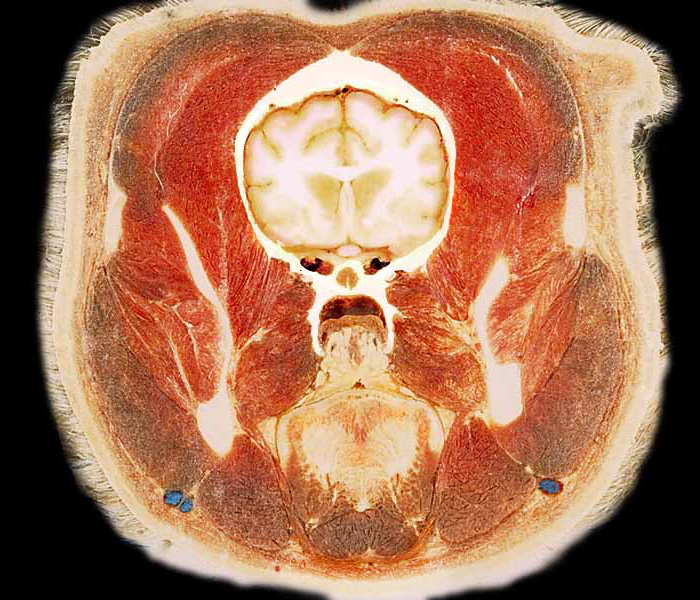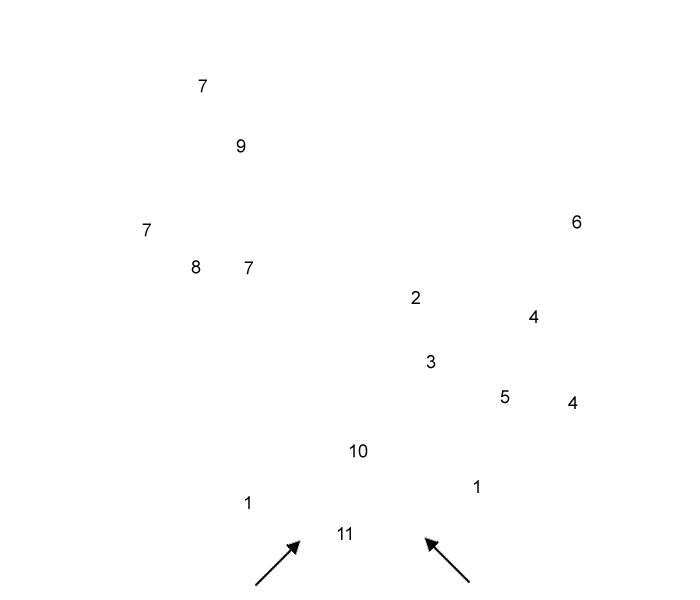

Transection through a canine head showing muscles of mastication. The digastricus m. (1) opens the jaw (temporomandibular joint). Lateral (2) and medial (3) pterygoid mm. are in position to move the jaw medially as well as to close the jaw. The masseter m. (4), which runs between the body of the mandible (5) and the zygomatic arch (6), closes the jaw. The massive temporal m. (7) inserts on the ramus of the mandible (8). This muscle closes the jaw and guards against rostral dislocation of the temporomandibular joint. The temporal m. originates from the temporal fossa formed by the calvaria (9) and from the zygomatic arch.
Also notice the tongue (10), geniohyoideus m. (11) and the mylohyoideus m. (arrows). The latter forms a sling extending from mandible to mandible.
